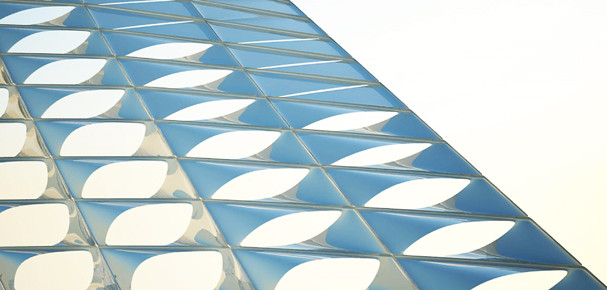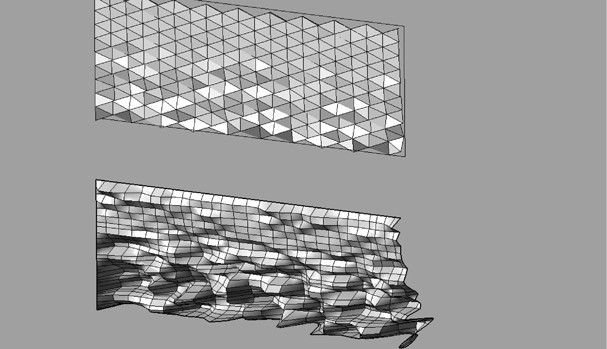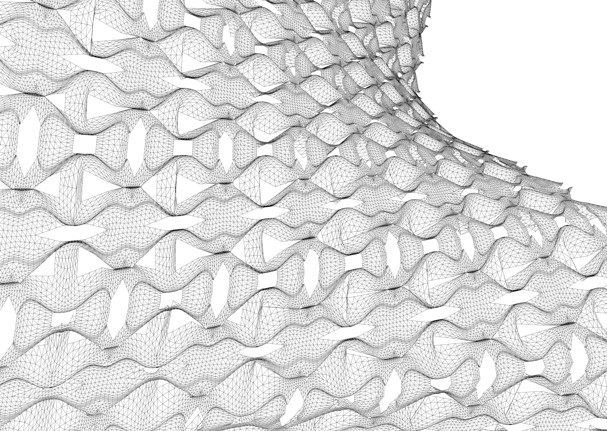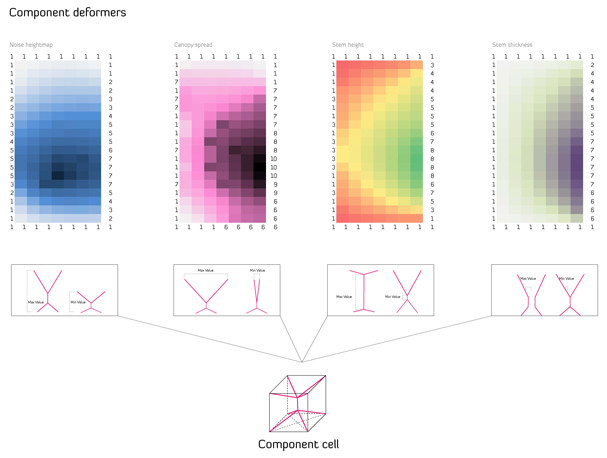
Peak Performance (2007-2008)

As part of a series of workshops conducted by CITA and Department 7, KADK.
Which parameters drive performance in architecture?
What is "fit" architecture?

In recent times a shift from continuous to sub-structured surfaces in computed architecture can be observed. No longer have blobs, but delicately subdivided skins appeared in architectural design. These skins, which are not continuous, but consist of large amount of disconnected surfaces (discrete surfaces) bear the potential of great relevance for the build, as they can fulfil essential criteria for architecture, i.e.:
- Modularity
- Opening
- Shift in opacity
- Possibility to inherit different materials (composite materials and layering)
Open publication - Free publishing
These surfaces can consist of non-standard elements or optimized modules. They can adapt to given parameters, as geometry, or create their own. Furthermore they can be individually addresses to react to external parameters (parametric design).

Yet what is the potential for design? What are the aesthetic, spatial, tectonic potentials of individual adjusted discreet surfaces and structures? Can a surface go in depth? Can a surface be proactive?
Within the frame of the workshop we want to look behind the skin and look how it can become a membrane - a membrane able to react to local conditions rather than a monolithic cover. A cover which becomes spatial and tectonically active. Herein the constituting cells are distributed by performance criteria, natural distribution patterns and conditional statements.

We will use all accessible means to explore the reactive, aesthetic, structural, spatial and tectonic possibilities. A special emphasis will be set on the linkage of external performance criteria to the structure. This parameters might derive from simulation being made, but other criteria from functional, social or aesthetic considerations weigh equal in the design process.
In recent times a shift from continuous to sub-structured surfaces in computed architecture can be observed. No longer have blobs, but delicately subdivided skins appeared in architectural design. These skins, which are not continuous, but consist of large amount of disconnected surfaces () bear the potential of great relevance for the build, as they can fulfil essential criteria for architecture, i.e.:These surfaces can consist of non-standard elements or optimized modules. They can adapt to given parameters, as geometry, or create their own. Furthermore they can be individually addresses to react to external parameters (parametric design).Yet what is the potential for design? What are the aesthetic, spatial, tectonic potentials of individual adjusted discreet surfaces and structures? Can a surface go in depth? Can a surface be proactive?Within the frame of the workshop we want to look behind the skin and look how it can become a membrane - a . A cover which becomes spatial and tectonically active. Herein the constituting .We will use all accessible means to explore the reactive, aesthetic, structural, spatial and tectonic possibilities. A special emphasis will be set on the linkage of external performance criteria to the structure. This parameters might derive from being made, but other criteria from weigh equal in the design process.

Images
All images from student work, and credit applies accordingly.















